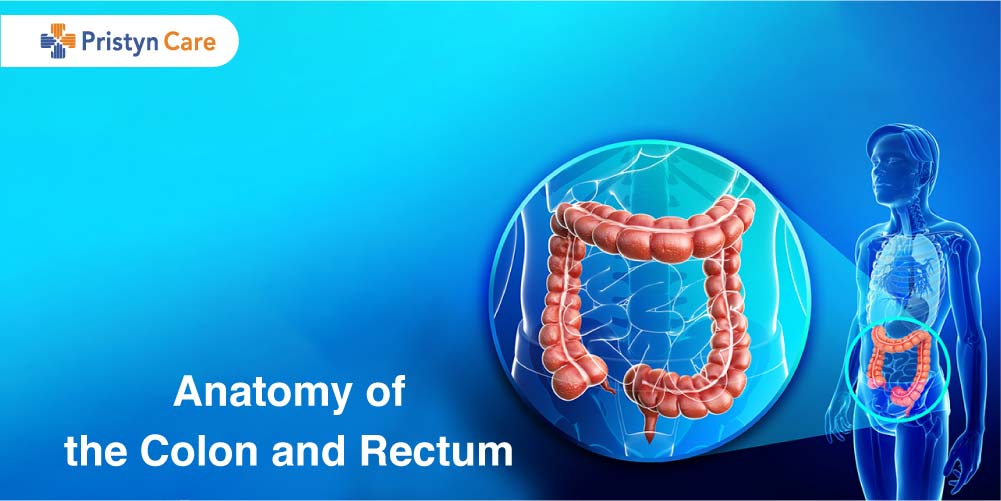
The human digestive system consists of a small intestine and a large intestine. Colon and rectum are parts of the large intestine. Let us know the anatomy of the colon and rectum.
Table of Contents
Anatomy and Physiology
The colon is the longest part of the large intestine. It is a long tubelike organ that removes water from digested food. The colon is further divided into:
- The ascending colon is the beginning of the large intestine into which the small intestine empties; it begins on the lower right side of the abdomen and then leads up to the transverse colon. It is 20 cm long.
- The transverse colon crosses the top of the abdomen from right to left, leading to the descending colon that takes waste down the left side. It is the largest and most mobile part of the colon with about 45 cm length.
- Descending colon follows traverse colon and is on the left side of the abdomen. This is about 30 cm long.
- Finally, the sigmoid colon is the last part of the colon that takes waste a few more inches, down to the rectum. This is 40 cm long. A cross-section of the rectum and sigmoid colon shows where waste leaves the body, through the anus.
Ascending colon and transverse colon together are called proximal colon while descending colon and sigmoid colon are called distal colon.
The rectum is the lower part of the large intestine whose length is about 15cm. It connects sigmoid colon and the anal canal. The colon stores the waste until it passes out from the anus.
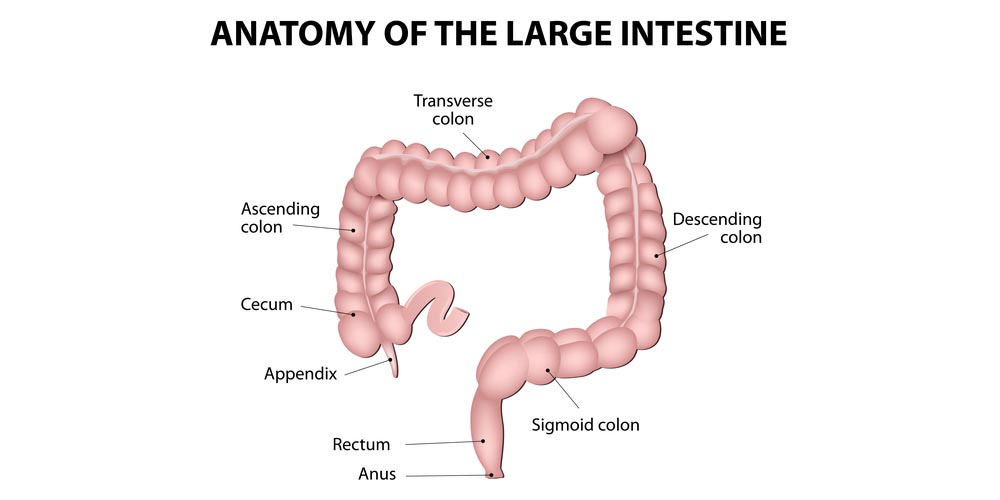
Layers of the colon and rectum
There are layers of tissues that form colon and rectum. They are:
Mucosa
The inner lining of the colon and rectum is mucosa. It is made up of:
- a thin layer of epithelial cells called the epithelium
- connective tissue layer
- layer of muscle called the muscularis mucosa
Submucosa
The submucosa is a layer of connective tissue that surrounds the mucosa. It contains mucous glands, blood vessels, lymph vessels and nerves.
Muscularis propria
The muscularis propria lies outside the submucosa. It is a thick layer of muscle. There is an inner ring of circular muscle fiber and an outer ring of long muscle fibers that surround the wall of the colon and rectum.
Serosa
The outer layer of the colon is the serosa which is missing in most of the rectum.
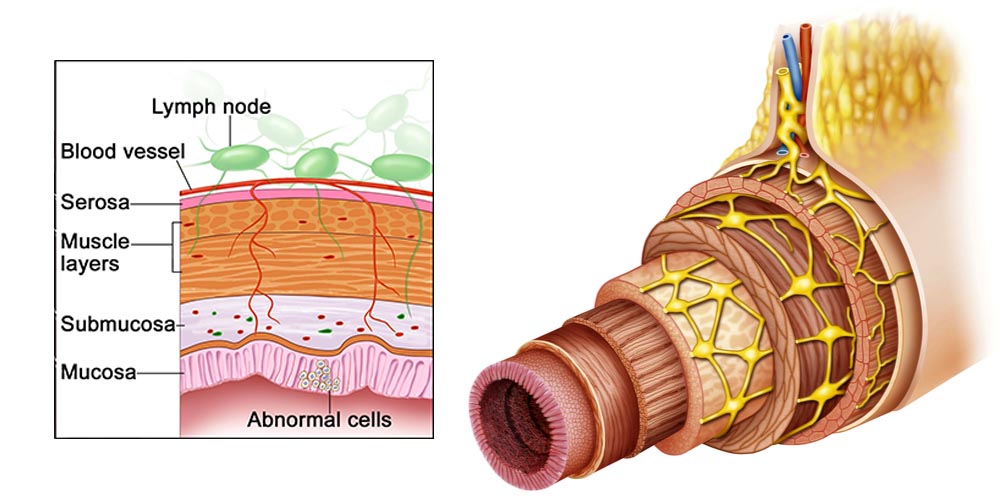
Functions of the colon and rectum
The colon and rectum:
- absorb water and some nutrients from what we eat and drink
- form and store stool
- move waste out of the body
The food after digestion moves into the colon via small intestine. Parts of the colon contract and relax so that the food moves through the colon and rectum. This movement is called peristalsis.
In the colon, bacteria break down food into smaller pieces. The inner layer of the mucosa absorbs water and other nutrients.
The liquid waste that remains form semi-solid stool. The mucosa also makes mucus that helps stool to move easily through the colon and rectum. When stool moves through the colon, it absorbs more water and it becomes more solid.
After leaving the colon, the stool moves into the rectum. The rectum holds the area for the stool. When the rectum is full, it throws the stool out of the body through the anus.
How to maintain the health of the colon and rectum?
Most of the colon and rectal problems are due to improper bowel movement. Sometimes, they are either too hard or too loose. Hard bowel movement can lead to cuts and tear in the anal region while loose bowel movement can stick around the anal region and cause itching in or around the anal opening. Therefore, if the size and consistency of the bowel movement is appropriate, then the colon and rectum complaints will disappear. A well-balanced diet, easy evacuation and proper cleaning can prevent colon and rectum problems.
Rectal and Colon Diseases And Conditions
There are various problems that affect rectum and colon that can be either functional or structural disorders.
Functional Disorders
The condition where there is no physical harm to the colon or rectum but the bowel does not function properly. Most of the time, people fail to understand the direct cause.
Constipation
Constipation is an irregular and painful bowel movement. The stool becomes hard if there is no bowel movement for more than three to four days. Reason for constipation can be inadequate fiber diet, insufficient water or fluid in the body or holding on to washroom calls.
Constipation causes straining during bowel movement and can lead to anal problems such as piles, fissure or fistula. You can try home remedies for constipation. They are very effective.
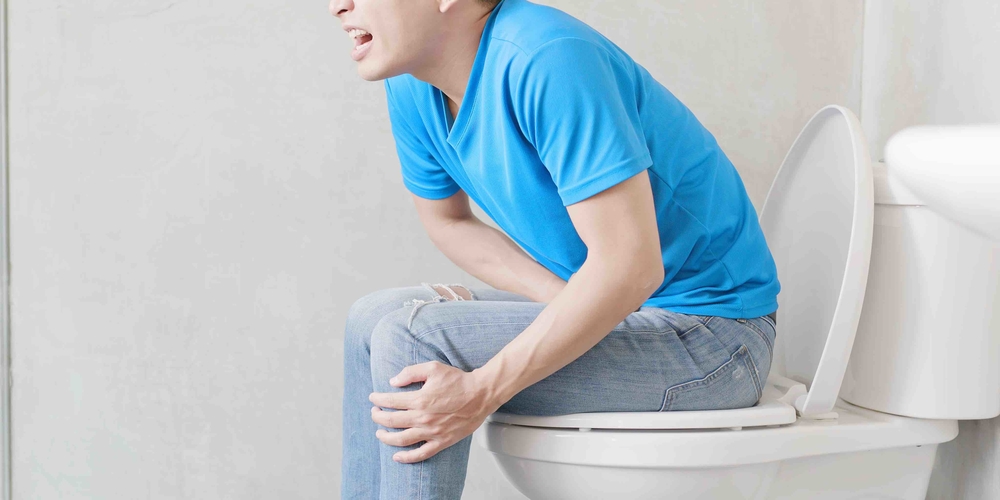
Irritable Bowel Syndrome (IBS)
IBS is a common condition that affects the large intestine. In this disorder, colon muscles contract in abnormal manner that results in different problems. There is high pressure in the colon due to which contractions result in acidity, bloating, abdominal pain or even cramps. Dietary changes can improve the condition of irritable bowel syndrome.

Structural Disorder
If there is any damage such as cut or soreness or something that needs to be removed or repaired such as a portion of the colon for diverticulitis or for colon cancer.
Anal Problems
Piles or Hemorrhoids
Piles or hemorrhoids are inflammation or swelling in the veins in the anus or lower rectum. There are mainly two types of hemorrhoids – internal and external.
Internal hemorrhoids are the blood vessels that line inside the anal opening. The internal hemorrhoids are the result of excessive straining or pressure during pregnancy. They become irritated and may bleed and can bulge out of the anal opening.
External hemorrhoids occur right under the skin outside the anus. They are so discomforting that they can be a problem in day to day life while sitting, during bowel movement or standing for long hours.
Treatment for piles
Home remedies for piles can be helpful during the initial stage. Otherwise, piles need surgical intervention. Laser surgery for piles is one of the best treatments that is minimally invasive. Know about piles laser treatment and call our medical coordinators if you have any queries.
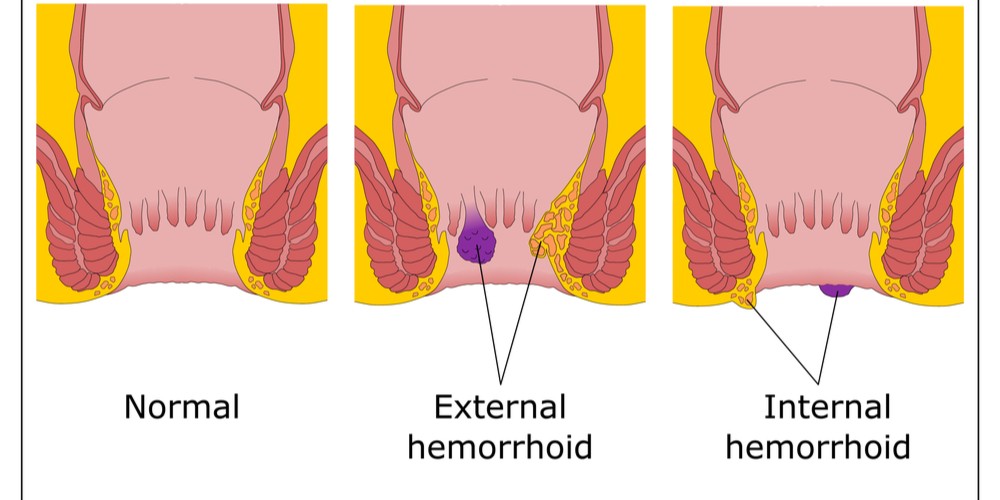
Anal Fissure
Anal fissure is the tear in the anal opening that happens as a result of constipation(hard stool) or diarrhea. There is extreme pain, burning and soreness in the anal region. Anal fissure is usually mistaken for piles during diagnosis.
Treatment for Fissure:
Fissure can be treated without surgery sometimes. While in some cases, laser surgery is recommended if the tear does not heal with medication or home remedies.
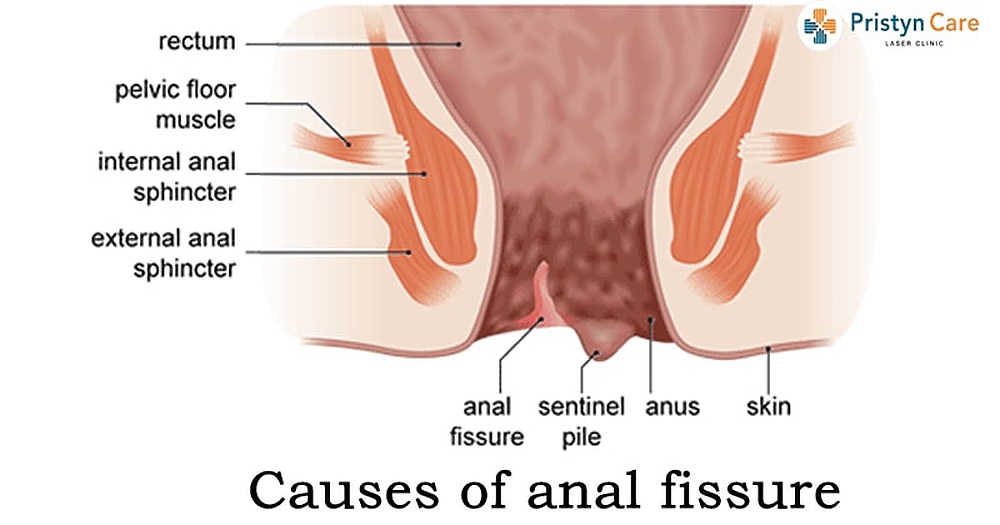
Abscess
A perineal abscess is an accumulation of pus due to blockage or infection of anal region. The treatment for abscess is draining the pus.
Anal Fistula
An anal fistula is a tunnel that connects an infected gland or abscess inside the anus to the opening around the anus region. Anal fistula do not cure on their own.
Treatment for Anal Fistula:
Doctors usually recommend laser surgery for anal fistula depending on the condition. Laser surgery is one of the best treatments for Anal Fistula.
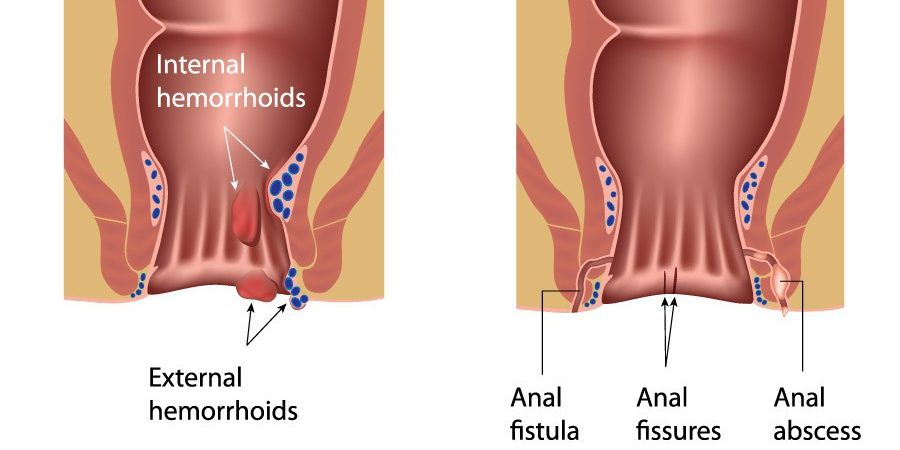
Other anal infections
There occurs an abscess filled with pus in the cleft. It consists of hair, dirt and waste and can cause severe pain and can lead to infection. It usually needs surgery for treatment.
Pristyn Care offers laser treatment for anorectal disorders through minimally invasive laser procedures.
Colon and rectal problems
Rectal Prolapse
A rectal prolapse is a condition when the rectum shrinks and comes out through the anal opening.
Diverticulitis
It is a small bulging in the lining of the large intestine most often in the colon. The bulges can cause severe abdominal pain, nausea, fever or change in bowel movements. The complications, if this problem is left untreated can be a blockage in the colon, abscess or peritonitis which is a medical emergency.
Colitis
It is a group of problems that causes inflammation and swelling in the large intestine especially rectum and colon. There are types of colitis:
- Infectious colitis that occurs due to an infection in the large bowel
- Ischemic colitis happens when there is insufficient blood flow to the colon
- Radiation colitis (after radiation therapy, usually for prostate, rectal, or gynecological cancer)
- Ulcerative colitis
- Crohn’s disease
Polyps and cancer
Cancer of rectum and colon is a serious problem. The tissues in the lining of the large intestine grow and divide it in an uncontrollable manner. Polyps are the growth of abnormal tissues in the colon or rectum.
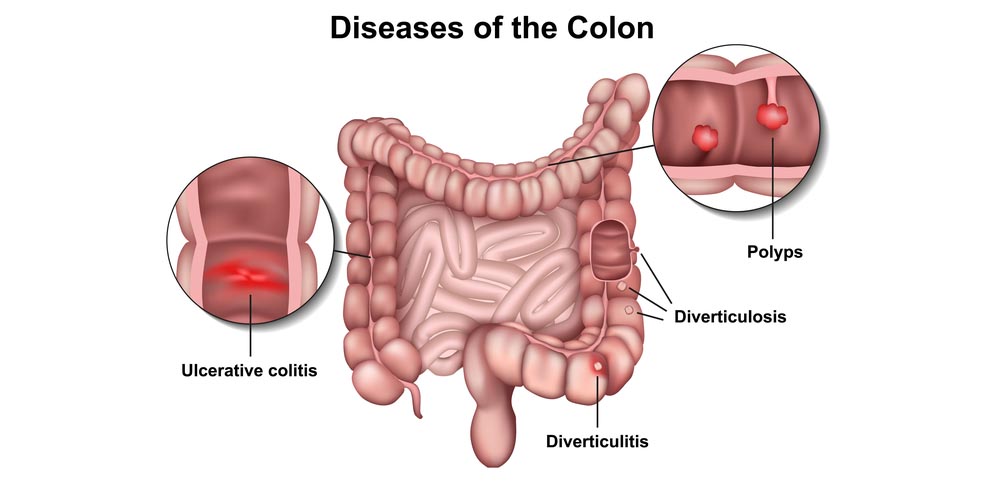
Take Away
These are some serious conditions when you must consult a general physician or a proctologist for proper diagnosis. We understand that colon and rectum problems make an individual feel discomfort to talk about. But talking to a doctor is the right way to keep them away. Treatment depends upon the severity of the condition and suitable treatment for a particular patient. The problem can be piles, fissure, fistula, fecal incontinence, abscess or prolapse.
Therefore, prompt medical care can prevent rectum and colon diseases. Rectal examination is recommended before going for any kind of treatment.
Also Read: Rectal Infection and Their Results







